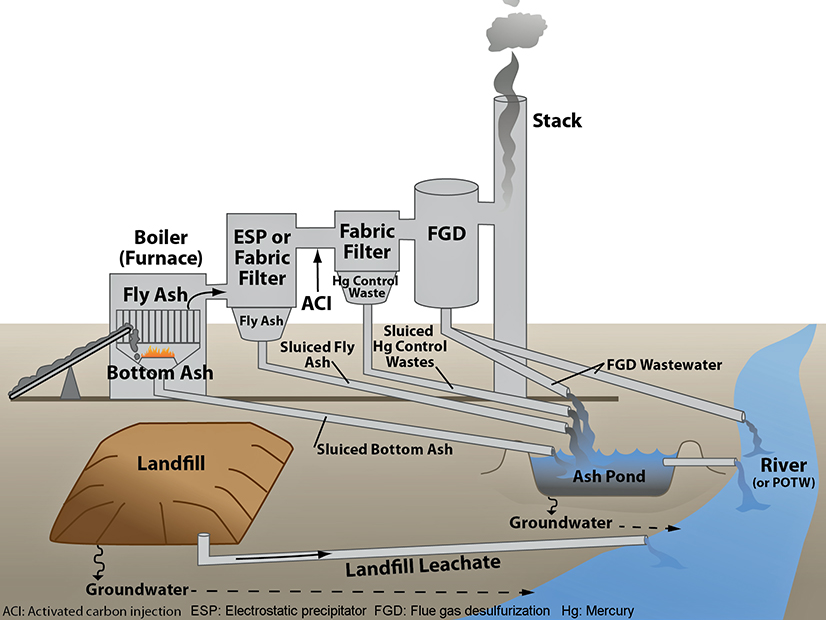
The EPA is proposing tighter standards on wastewater discharge from coal-fired power plants.
The revised Effluent Limitations Guidelines and Standards would restore and build on standards set under President Obama in 2015 but weakened under President Trump in 2020. The EPA estimates the changes would block the release of 584 million pounds of toxic pollutants per year via three separate waste streams.
Use of coal as a fuel for steam electric generating stations has been steadily decreasing in the U.S., and the proposed changes appear to encourage additional decommissioning, with an exit option for plant operators planning or considering a shutdown or a conversion to a different fuel.
Operators will be eligible for less-stringent wastewater pollution limits if they agree to permanently stop burning coal by 2028. And those that have already complied or are in the process of complying with the 2015 or 2020 requirements will get a pass on some of the new regulations if they plan to stop burning coal by 2032.
The original deadline for the 2028 opt-in has already passed, but the EPA said in a fact sheet that it is aware that additional plant operators would opt in if the deadline were extended as it proposes and said the extension might give some operators the flexibility to cease burning coal earlier than they might otherwise.
Announcing the proposal Wednesday, EPA Administrator Michael S. Regan called it an ambitious step to protect communities from harmful pollution.
Coal-fired plants discharge large amounts of wastewater laced with mercury, other toxic pollutants, nutrient pollution and dissolved solids, the EPA said.
The proposal would address three waste streams from combustion — flue gas desulfurization wastewater, bottom ash transport water and combustion residual leachate — and pave the way for potentially stricter discharge standards on surface impoundments such as ash ponds.
The EPA offers four sets of options in its proposal. It estimates the total social costs of its preferred option at $200 million and total monetized benefit at $1.56 billion, plus unquantifiable benefits such as habitat improvement for aquatic life.
In its impact analysis, the EPA projects a 0.1% nationwide reduction in generating capacity and 0.1% increase in production costs by 2030 as a result of plant slowdowns or shutdown under its preferred option. Depending on the region, that could mean a residential bill increase anywhere from 9 cents to $1.31 per household per year, the EPA estimates.
The rule was originally issued in October 1974. It was amended four times through 1982, then not again until 2015. After two legal challenges, EPA in August 2020 revised it again, changing limits on the flue gas desulfurization and bottom ash transport wastewater discharge.
Five months later, on his first day in office, President Biden issued Executive Order 13990, ordering the EPA to review all regulation and policy actions taken under President Trump and to revoke or revise any that did not protect public health and the environment.
The EPA’s move to reaffirm Mercury and Air Toxics Standards for power plants was one result of that order. (See EPA Reaffirms Power Plant Mercury Regulations.) The new wastewater regulations proposal announced Wednesday is another.
The EPA will soon post details on virtual public hearings planned April 20 and 25.


